*NURSING > QUESTIONS & ANSWERS > ATI MED-SURG Part B Questions & Answers Latest Solutions (All)
ATI MED-SURG Part B Questions & Answers Latest Solutions
Document Content and Description Below
MED-SURG Part B Questions & Answers 1. A nurse is reinforcing teaching with an older adult client who has osteoporosis. Which of the following instructions should the nurse in the teaching? a) "Place ... throw rugs on wooden floors at home." b) "Supplement your diet with vitamin E." c) "Swim laps for 20 minutes twice per week." d) "Take calcium supplements with meals." (The nurse should instruct the client to take calcium carbonate supplements with or following meals to increase absorption and effectiveness.) 2. A nurse is reviewing the medication record of a client who is taking digoxin. Which of the following medications should the nurse identify as increasing the risk for the client to develop digoxin toxicity? a) Potassium chloride b) Famotidine c) Levothyroxine d) Furosemide (The nurse should identify that loop diuretics, such as furosemide, increase the urinary excretion of potassium, which can lead to hypokalemia. Hypokalemia increases the risk for the development of digoxin toxicity.) 3. A nurse is reinforcing teaching about insulin injections with an adult client who weighs 45.4 kg (100 lb.). Which of the following statements by the client indicates an understanding of the teaching? a) "I should insert the needle at a 90-degree angle." b) "I should give my shot in my belly tissue." (Clients who have low body weights can have very little subcutaneous tissue. Therefore, the nurse should instruct the client to administer the medication in the upper abdomen for proper absorption.) c) "I will pull back on the syringe plunger to look for blood before I push the medication in." d) "I will use the side of my hand to pull my skin to the side prior to administering the insulin." 4. A nurse is reinforcing discharge teaching for a client who had a mechanical mitral valve replacement. Which of the following statements by the client indicates an understanding of the teaching? a) "I will notify my dentist about this procedure." (The nurse should instruct the client to notify his dentist about the mechanical mitral valve replacement before any procedures so antibiotic therapy can be initiated to reduce the risk of endocardial infection.) b) "I will take an enteric-coated aspirin daily." c) "I will use a firm-bristled toothbrush." d) "I will weigh myself once a week." 5. A nurse is reviewing the medical record for an older adult client who is experiencing nausea and vomiting. Based on the client data, which of the following actions should the nurse take? (Click on the “Exhibit” button for additional client information. There are three tabs that contain separate categories of data.) View the Exhibit Exhibit 1 Exhibit 2 Exhibit 3 Diagnosis Results Sodium 142 mEq/ Potassium 4.2 mEq/L BUN 36 mg/dL Creatinine 1.4 mg/dL Nurses’ Notes 1200: Alert and oriented x3 Lungs clear to auscultation Decreased skin turgor Dry mucous membranes Graphic Record Temperature 0800: 37.7° C (99.9° F) 1200: 37.2° C (99.0° F) Pulse 0800: 96/min 1200:105/min Respiratory rate 0800: 18/min 1200: 20/min Blood pressure 0800; 118/62 mmHg 1200: 104/65 mm Hg a) Encourage the client to ambulate. b) Administer an antipyretic medication. c) Notify the charge nurse of the client's BUN level (The client's BUN level is above the expected reference range of 10 to 20 mg/dL, which indicates dehydration and impaired renal function. The nurse should notify the charge nurse of this finding and anticipate interventions to restore the client's fluid volume.) d) Keep the temperature in the client's room warm. 6. A nurse is providing information regarding transmission-based precautions for a client who has Clostridium difficile to an assistive personnel (AP). Which of the following instructions should the nurse include? (Select all that apply). a) "Provide the client with disposable utensils and dishes for meals." (Clients who have C. difficile require contact precautions, which include using disposable utensils and dishes during meals to prevent exposure to contaminants by others.) b) "Leave blood pressure equipment in the client's room." (When using contact precautions, the health care staff should dedicate equipment to single-client use to prevent transmission of the pathogen.) c) "Clean contaminated surfaces with a bleach solution." (The health care staff should use a bleach solution to clean equipment to prevent transmission of the pathogen.) d) "Use an alcohol-based hand sanitizer after client care." e) "Wear a face mask when in the client's room." 7. A nurse is admitting a client who is suspected having active tuberculosis (TB). Which of the following actions should the nurse take first? (chap. 20) a) Administer antituberculosis medication. b) Institute airborne precautions. (The greatest risk from this client is transmitting TB to staff and other clients. Therefore, the first action the nurse should take is to implement airborne precautions.) c) Obtain sputum cultures. d) Auscultate breath sounds. 8. A nurse is caring for a client who is postoperative and has a Jackson-Pratt drain. Which of the following actions should the nurse take? a) Fill the bulb reservoir with 0.9% sodium chloride. b) Allow the Jackson-Pratt drain to hang freely. c) Cut a slit in a gauze sponge and apply it around the tubing insertion site. d) Compress the bulb reservoir and then close the drainage valve. (The nurse should fully compress the bulb reservoir and then replace the valve plug using aseptic technique to establish suction after emptying or activating a Jackson-Pratt drain.) 9. A nurse is reinforcing teaching with the parent of a toddler who has type I diabetes mellitus and whose prescription has been changed from regular insulin to lispro insulin. Which of the following information should the nurse include in the teaching? a) Lispro is given once a day. b) Lispro should be given before eating. (Lispro insulin should be given around mealtime, within 15 min before or after eating.) c) Lispro cannot be given with other insulin. d) Lispro does not cause hypoglycemia. 10. A nurse is reinforcing teaching with a client who has microcytic anemia and is prescribed a daily iron supplement. The nurse tells the client to consume foods containing vitamin C when taking the supplement to enhance iron absorption. Which of the following client food choices indicates an understanding of the teaching? a) 1 cup cooked brown rice b) 1 cup boiled broccoli (The nurse should determine that choosing boiled broccoli indicates an understanding of the teaching because 1 cup contains 101 mg of vitamin C per serving.) c) 1 cup cottage cheese d) 1 cup cooked kidney beans 11. A nurse is assisting with the development of a plan of care to manage pain for a client who has herpes zoster with lesions on the lower extremities. Which of the following interventions should the nurse include in the plan of care? a) Keep bed linens off of the affected areas. (The nurse should keep bed linens off of the affected areas using a bed cradle, which will relieve pain caused by the linens rubbing against the lesions.) b) Position a heat lamp over the lower extremities. c) Apply warm, moist compresses to the affected areas. d) Initiate droplet isolation precautions. 12. A nurse is reinforcing teaching with a client about increasing dietary fiber. The nurse should recommend which of the following foods as the best source of fiber? a) ½ cup cooked kidney beans (The nurse should recommend kidney beans as the best source of fiber because ½ cup contains 6.5 g of fiber per serving.) b) ½ cup raw cauliflower c) 1 cup cucumber with peel d) 1 cup parboiled brown rice 13. A nurse is assisting in the care of a client who has AIDS-related pneumonia. The client is receiving antibiotic therapy and albuterol nebulizer treatments daily. Which of the following findings should indicate to the nurse that the client’s therapeutic regimen is effective? a) Adventitious lung sounds b) Decrease in exertional dyspnea (A decrease in exertional dyspnea indicates the antibiotics are resolving the infection and the albuterol treatments are facilitating effective ventilation. Therefore, the nurse should evaluate the therapeutic regimen as effective for the client.) c) Respiratory rate of 26/min while sitting in a chair d) Elevation of the head of the bed is required to sleep 14. A nurse is monitoring a client who has a wrist cast and reports intense itching underneath the cast. Which of the following actions should the nurse take? a) Blow cool air into the cast using a blow dryer on a cool setting. (Using a blow dryer on a cool setting to blow cold air into the cast is an effective way to relieve the client's itching without damaging the skin.) b) Obtain a prescription for pregabalin. c) Ask the provider to bivalve the cast. d) Provide the client with a tongue blade to rub the skin under the cast. 15. A nurse is preparing to insert a double-lumen gastric (Salem) sump tube for a client who has peptic disease and has developed gastrointestinal bleeding. Which of the following images indicates the tube that the nurse should select? a. In a double-lumen gastric (Salem) sump tube, the clear portion of the tube allows for aspiration of stomach contents. The blue portion of the tube, or the "pig tail", vents the tube to the atmosphere, which prevents the tube from becoming lodged against the wall of the stomach and protects the stomach from damage. b. This image shows a percutaneous endoscopic gastrostomy (PEG) feeding tube. A provider inserts a PEG feeding tube surgically through the abdomen and into the stomach to allow for longer-term medication administration and tube feedings. c. This image shows a Levin tube. It is a single-lumen nasogastric tube which facilitates gastric decompression. Damage to the gastric mucosa can occur during aspiration of stomach contents with this tube. d. This image shows a Sengstaken-Blakemore tube. The provider prescribes this tube in the treatment of bleeding esophageal varices. 16. A nurse is caring for a client who has just returned to the unit following a bronchoscopy. Which of the following findings should the nurse report to the provider? a) Absent gag reflex b) Blood-tinged mucus c) Diminished breath sounds (Diminished breath sounds might indicate a pneumothorax or laryngeal edema. The nurse should report this finding to the provider for further evaluation of the client.) d) Oxygen saturation 95% 17. A nurse is caring for a client who has been taking enalapril. The nurse should monitor the client for which of the following adverse effects? a) Bradycardia b) Tremors [Show More]
Last updated: 1 year ago
Preview 1 out of 22 pages
Instant download
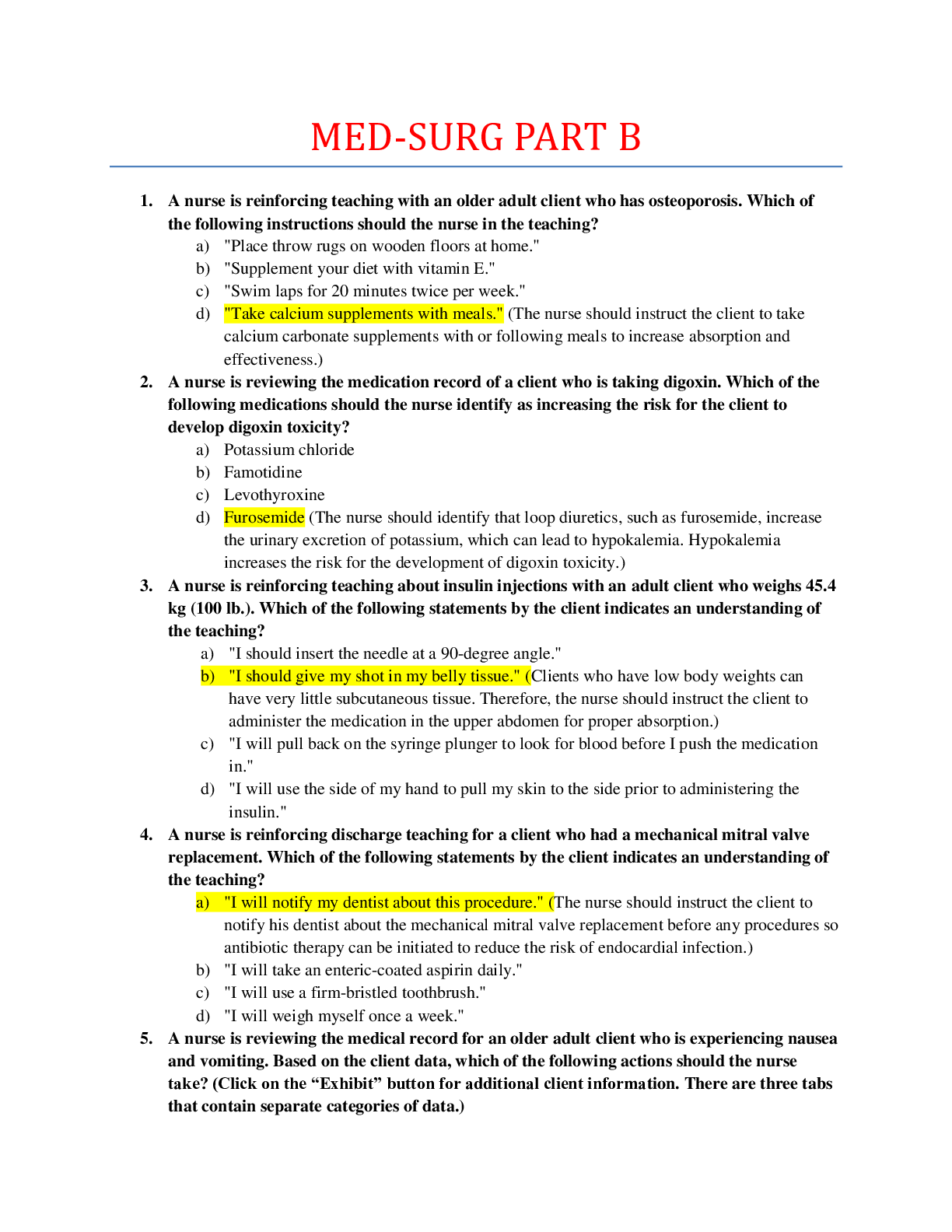
Instant download
Reviews( 0 )
Document information
Connected school, study & course
About the document
Uploaded On
Nov 28, 2020
Number of pages
22
Written in
Additional information
This document has been written for:
Uploaded
Nov 28, 2020
Downloads
0
Views
96

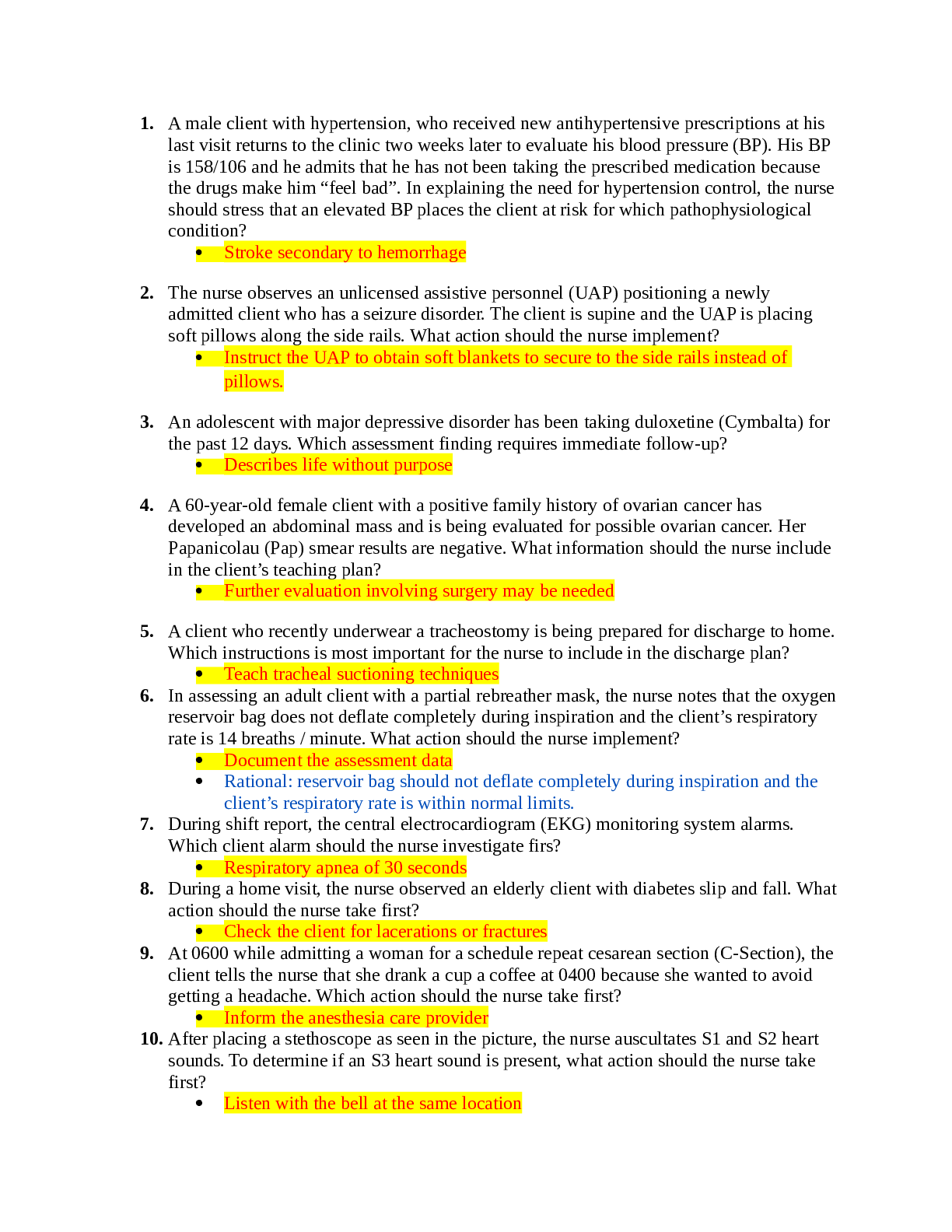

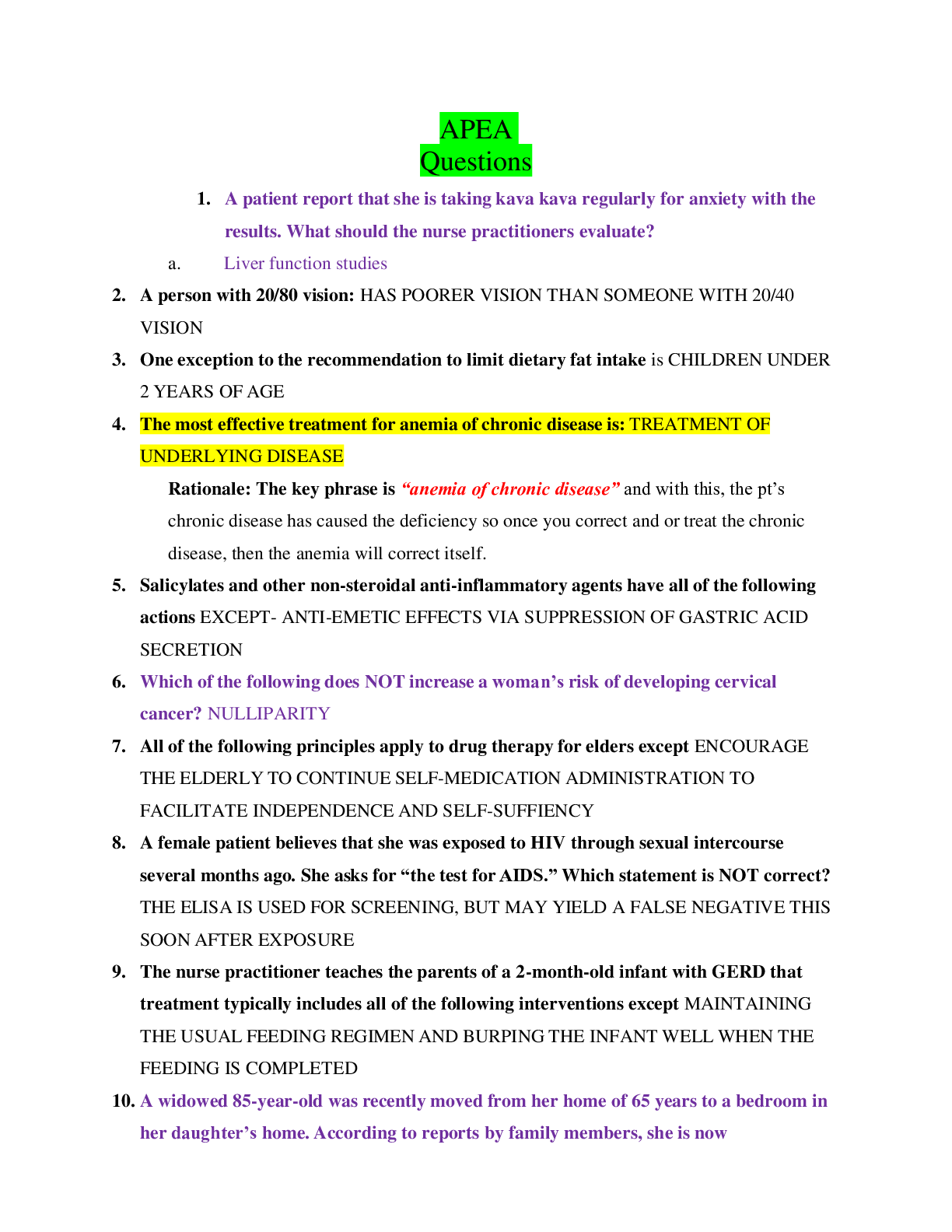


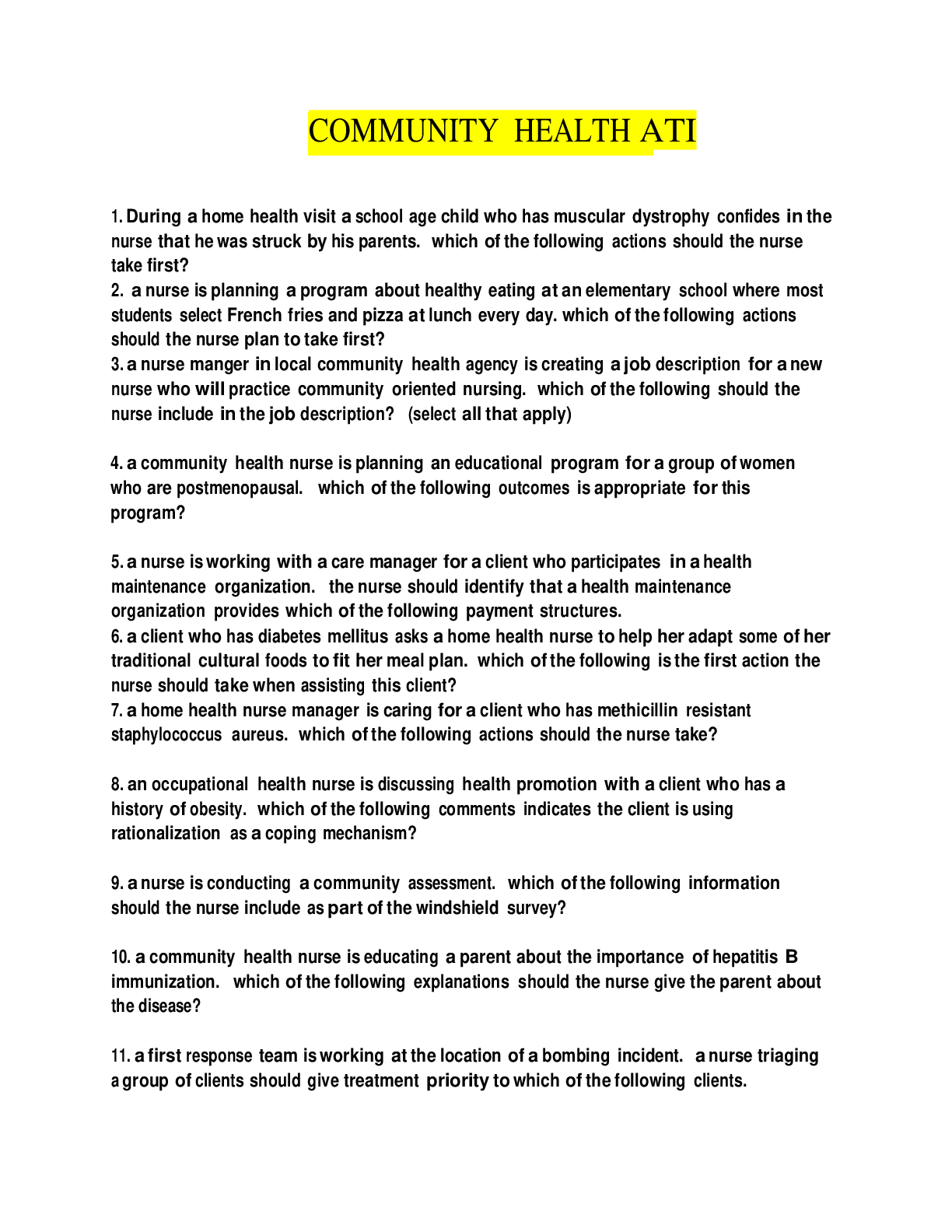
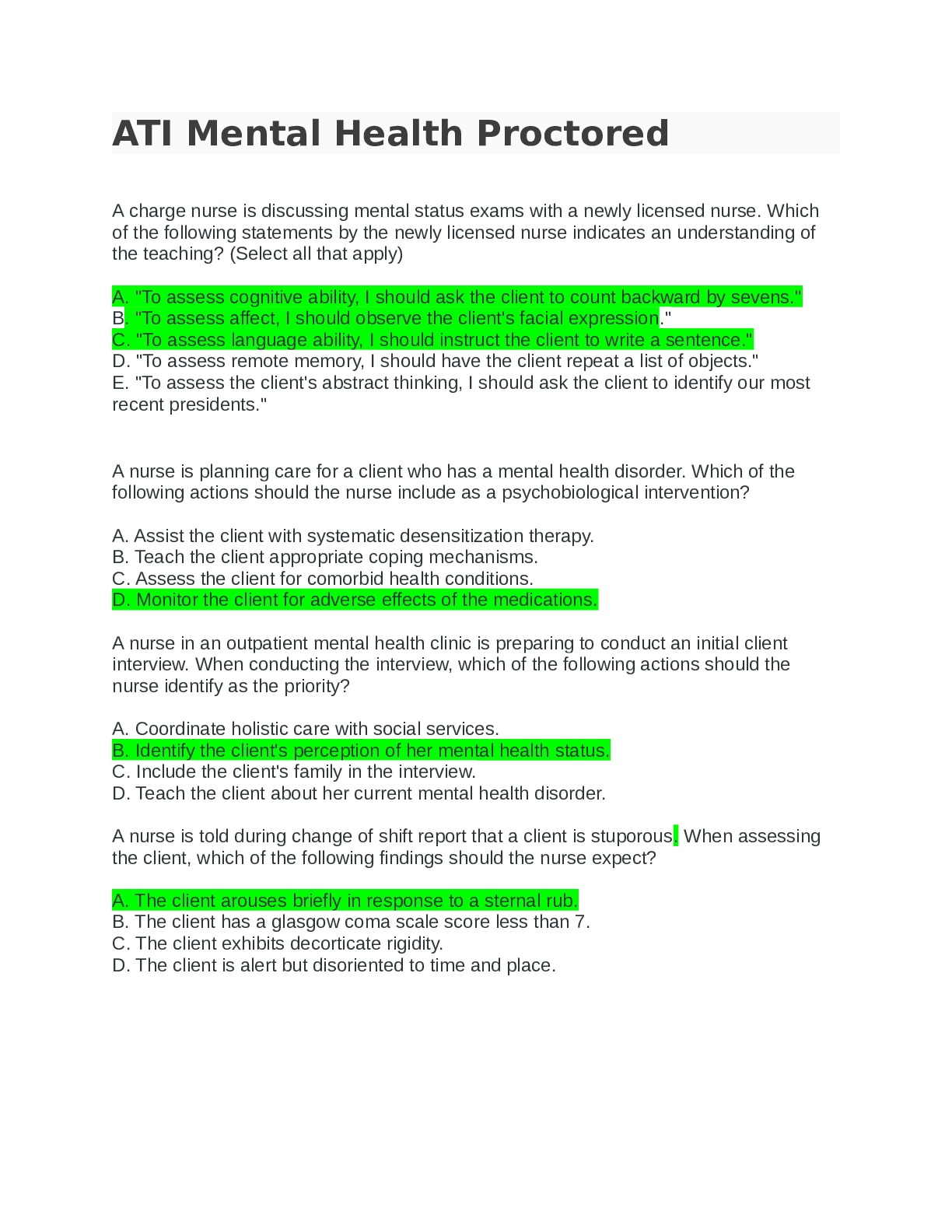
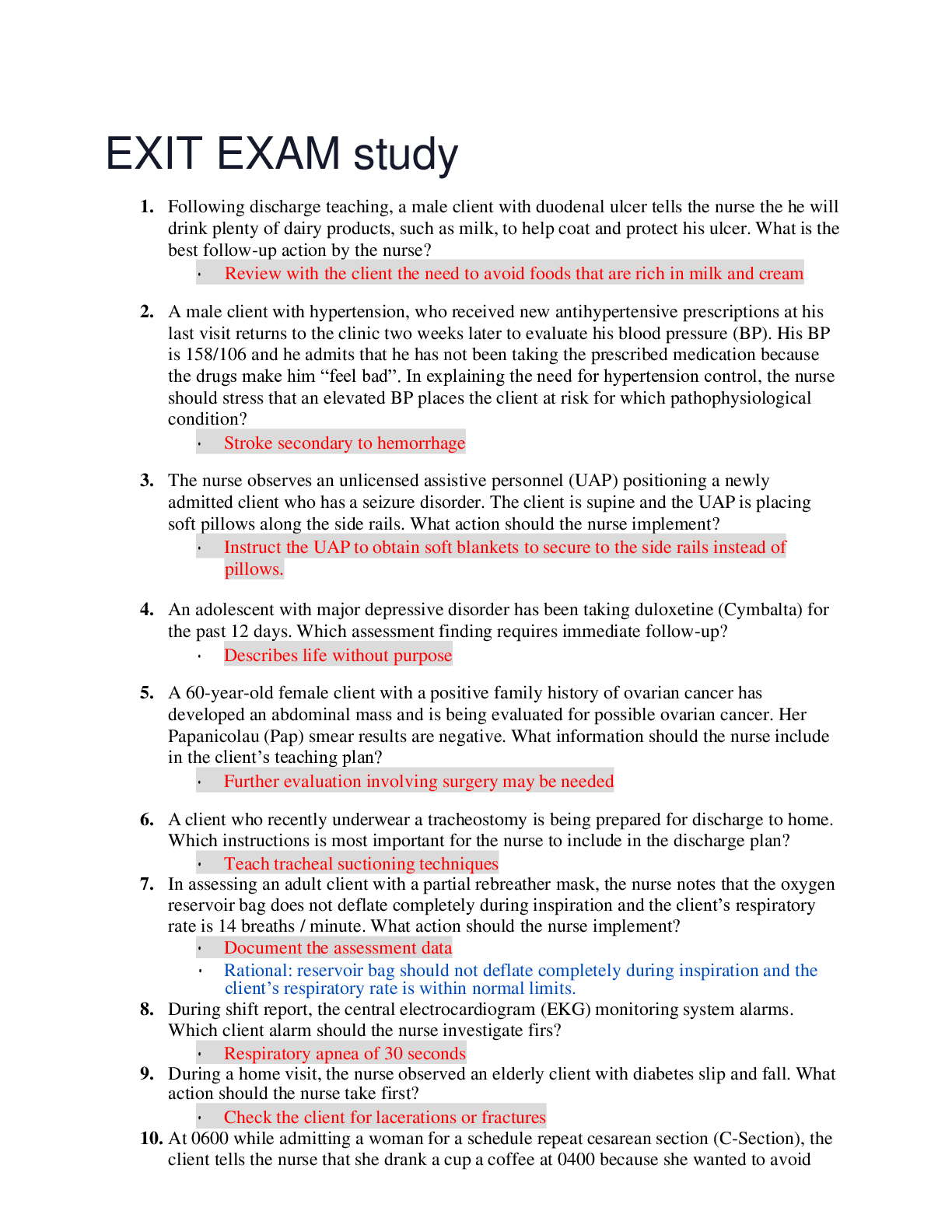
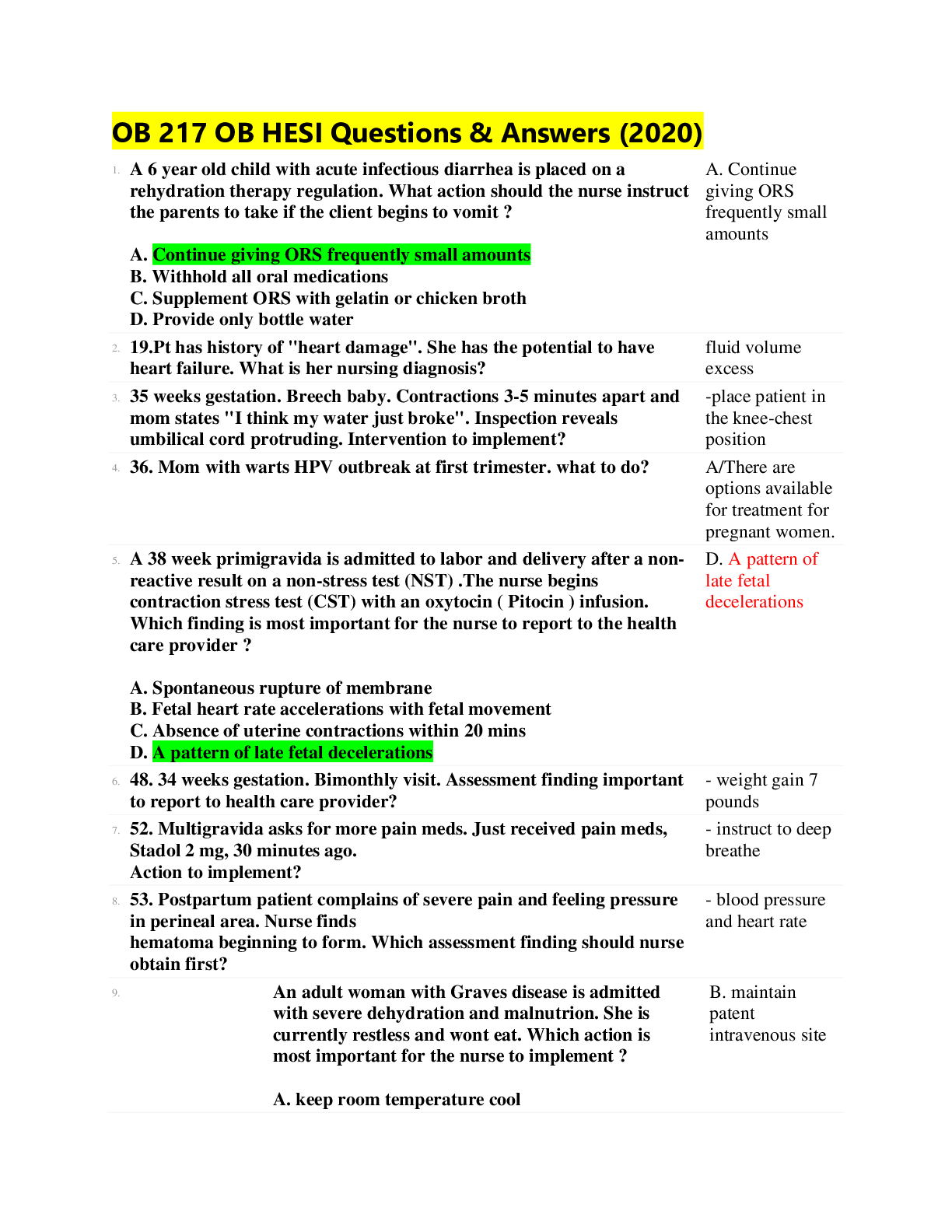
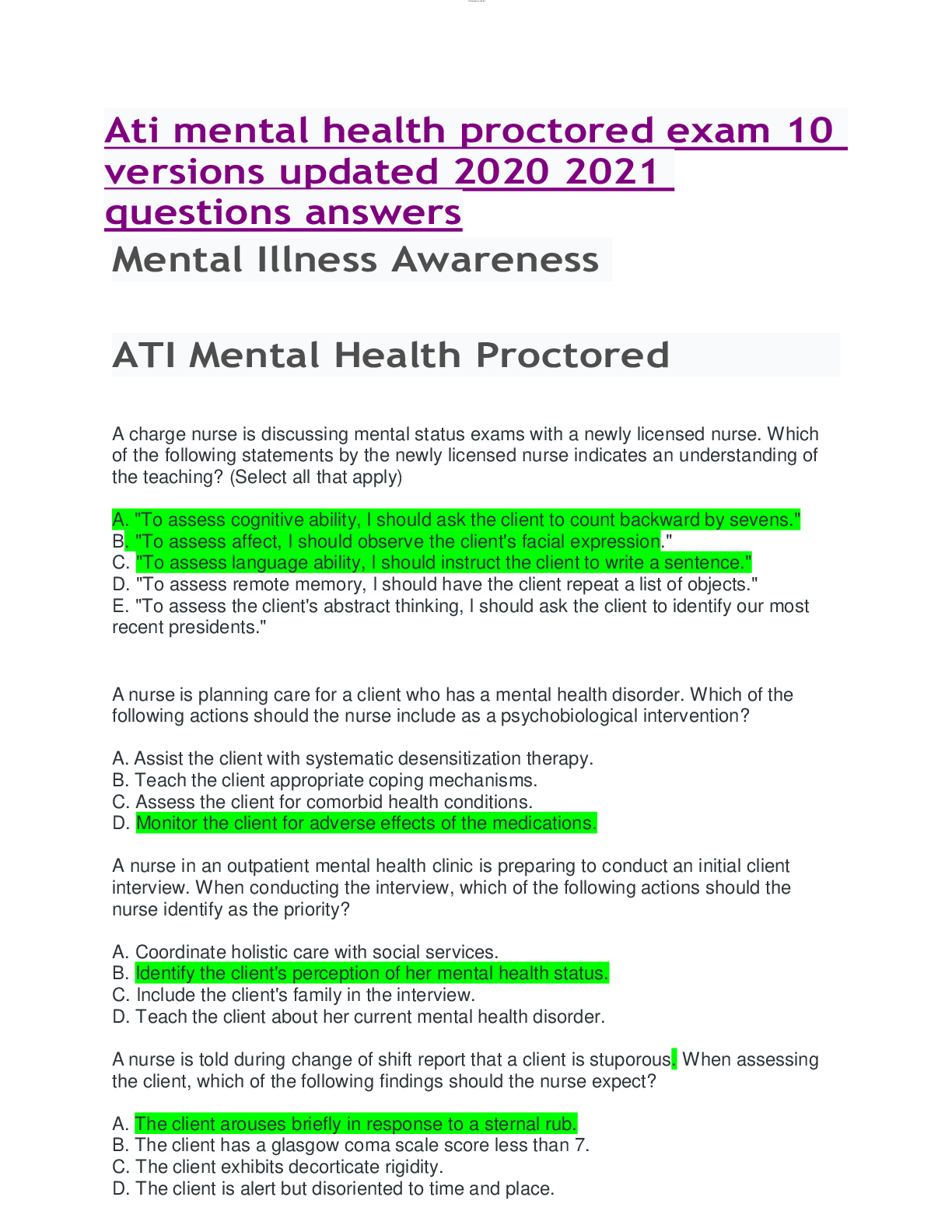
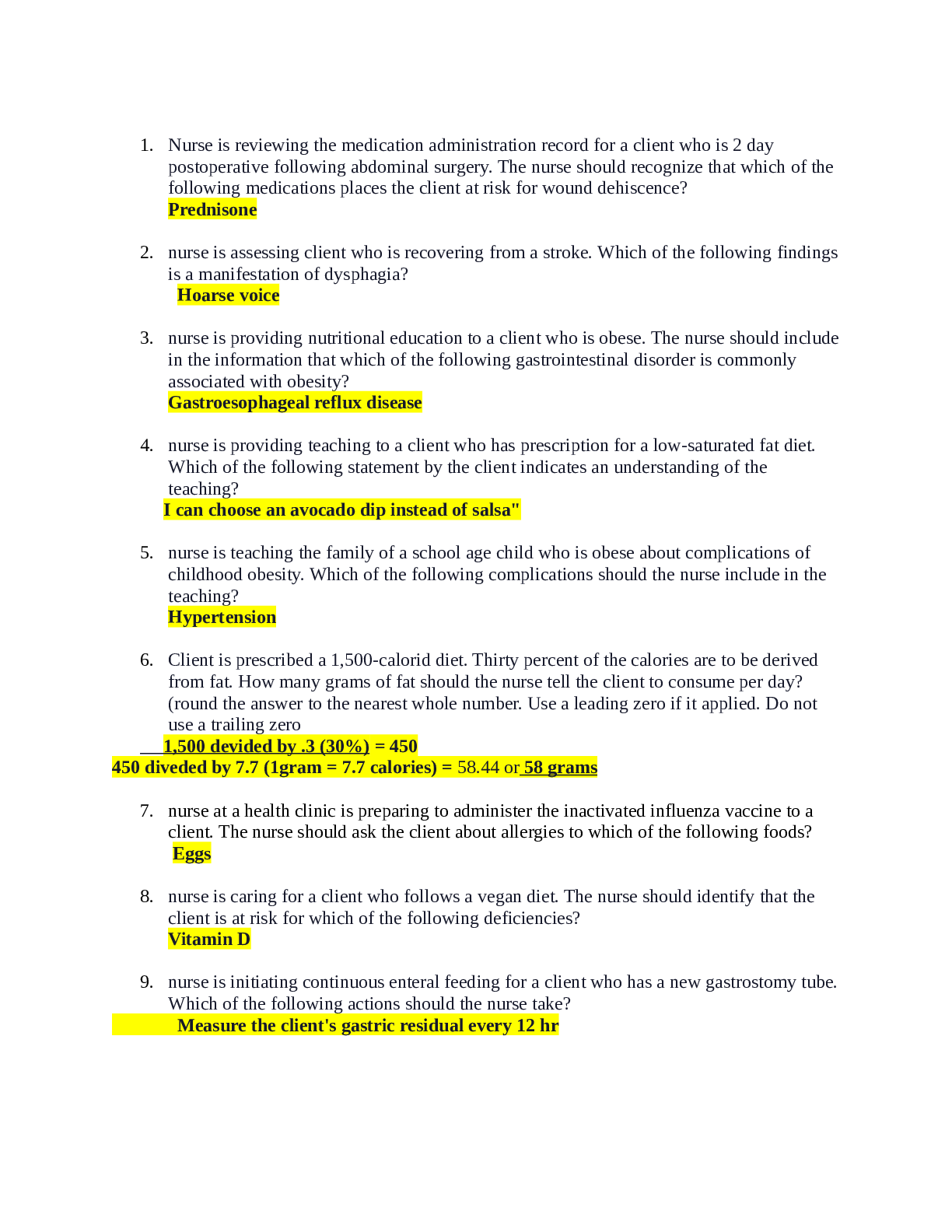
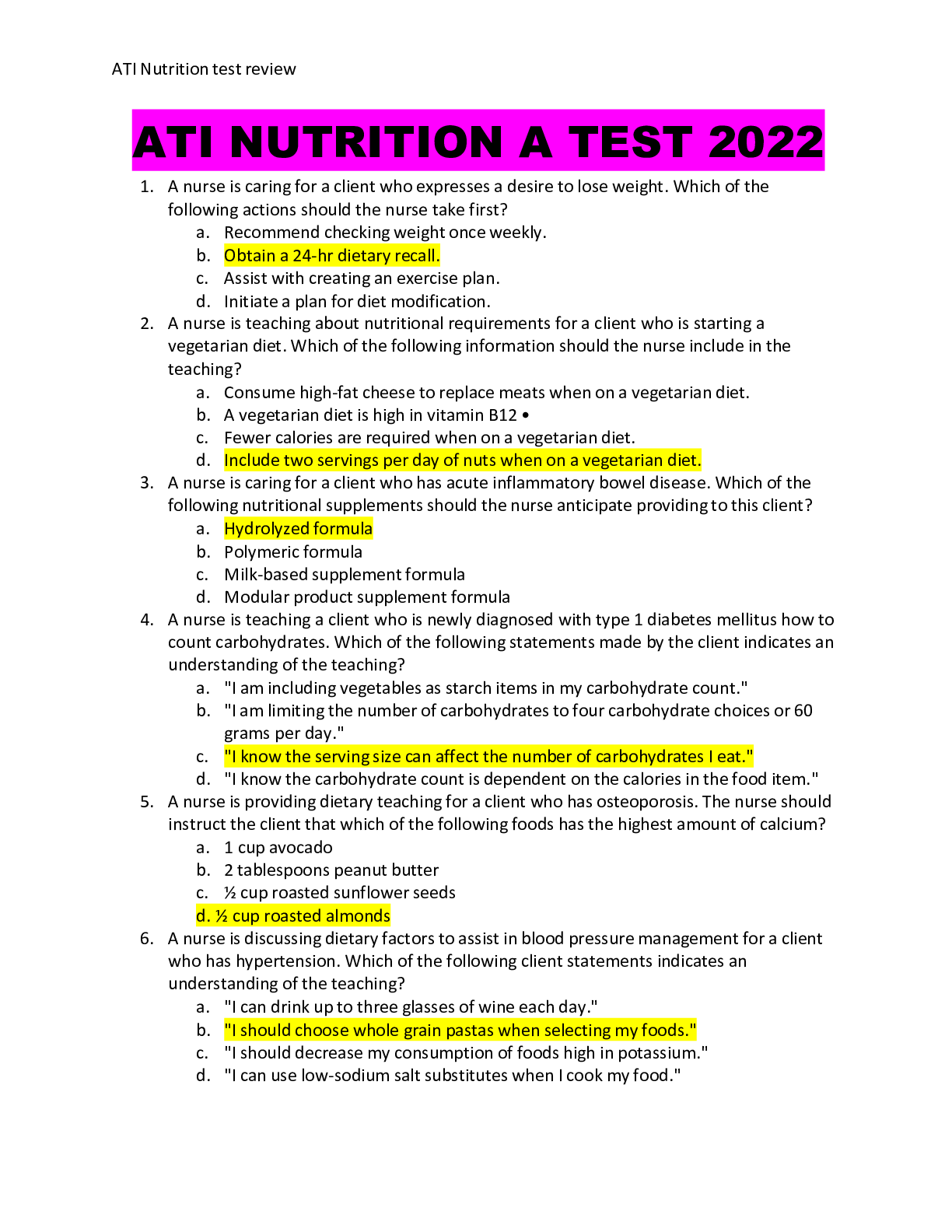

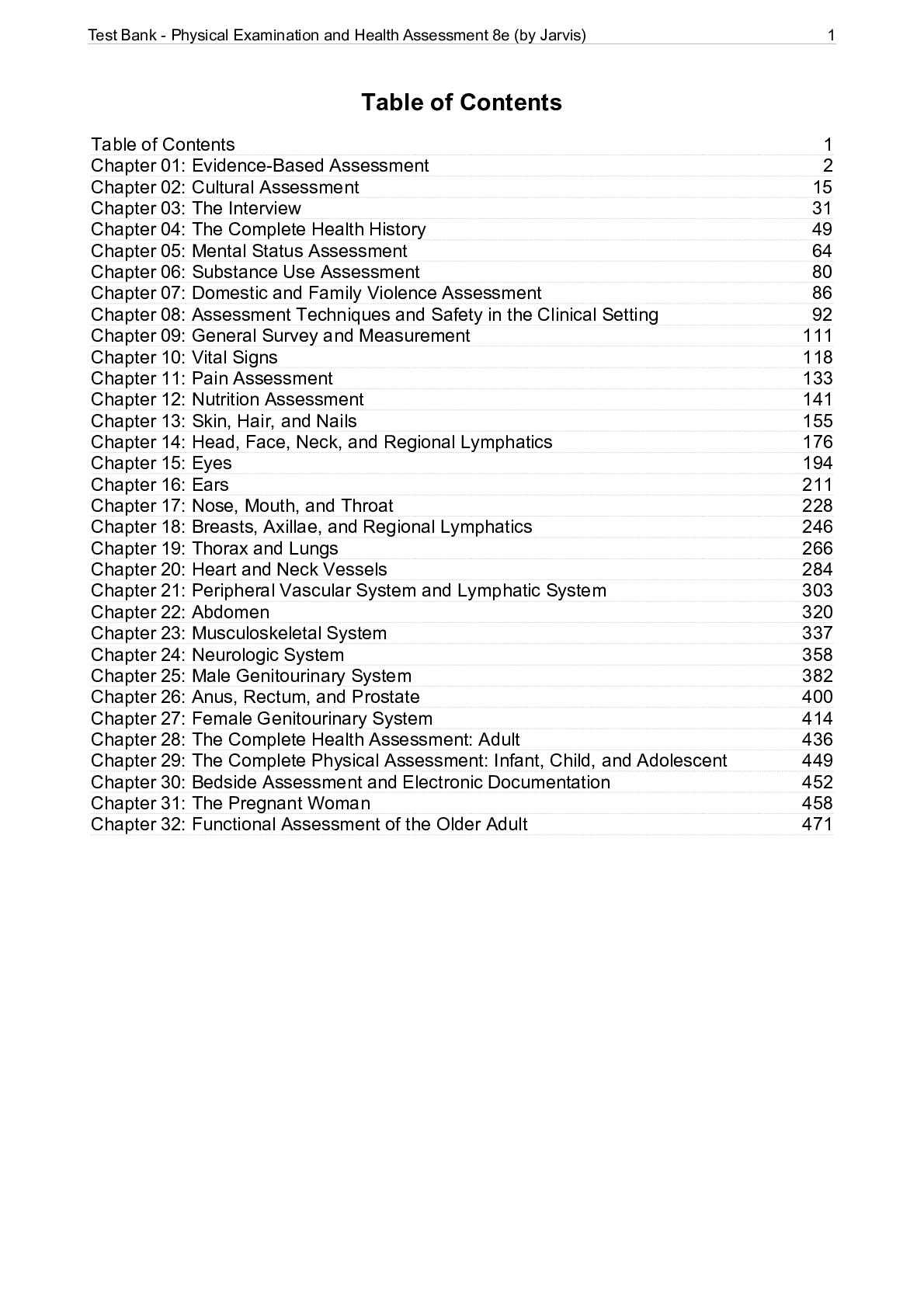
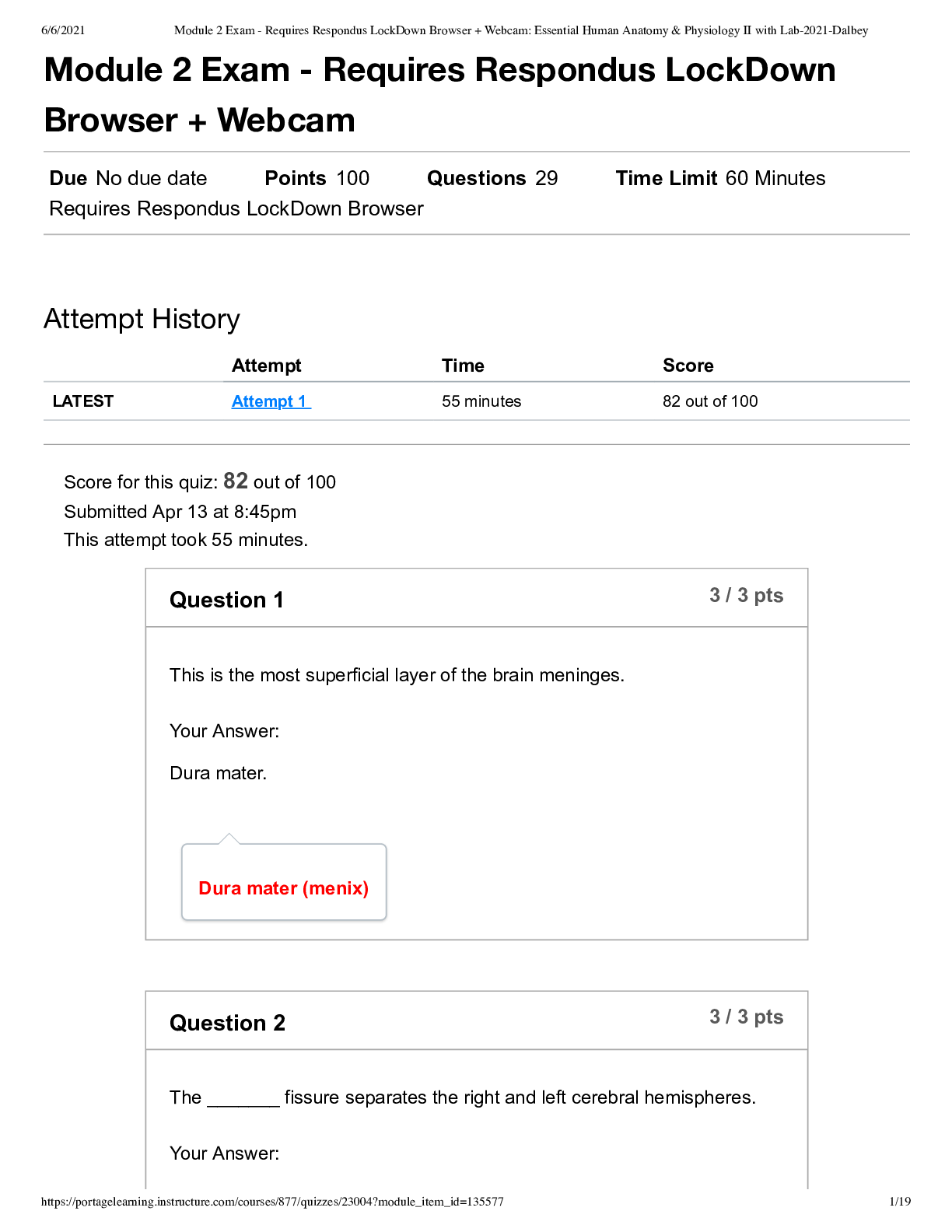
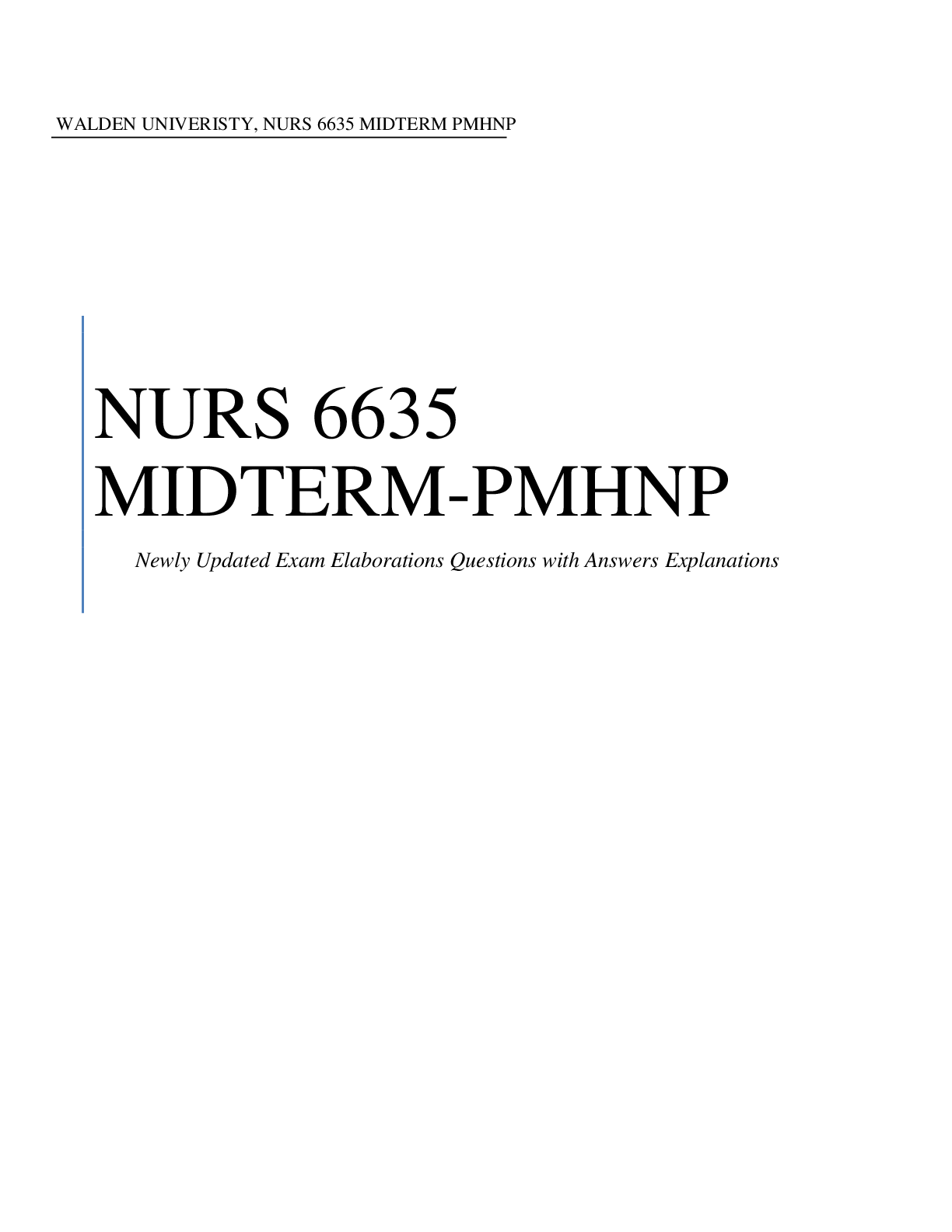
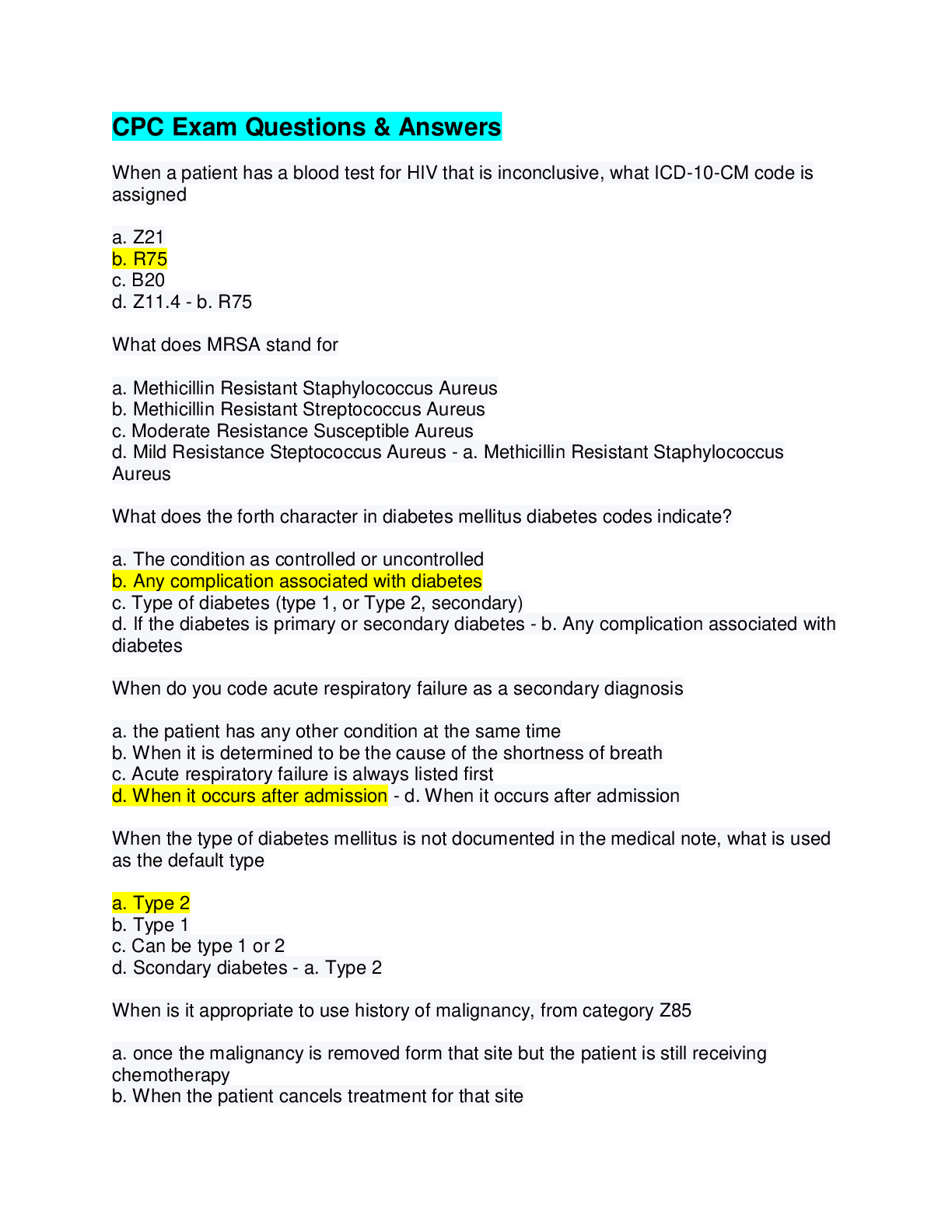



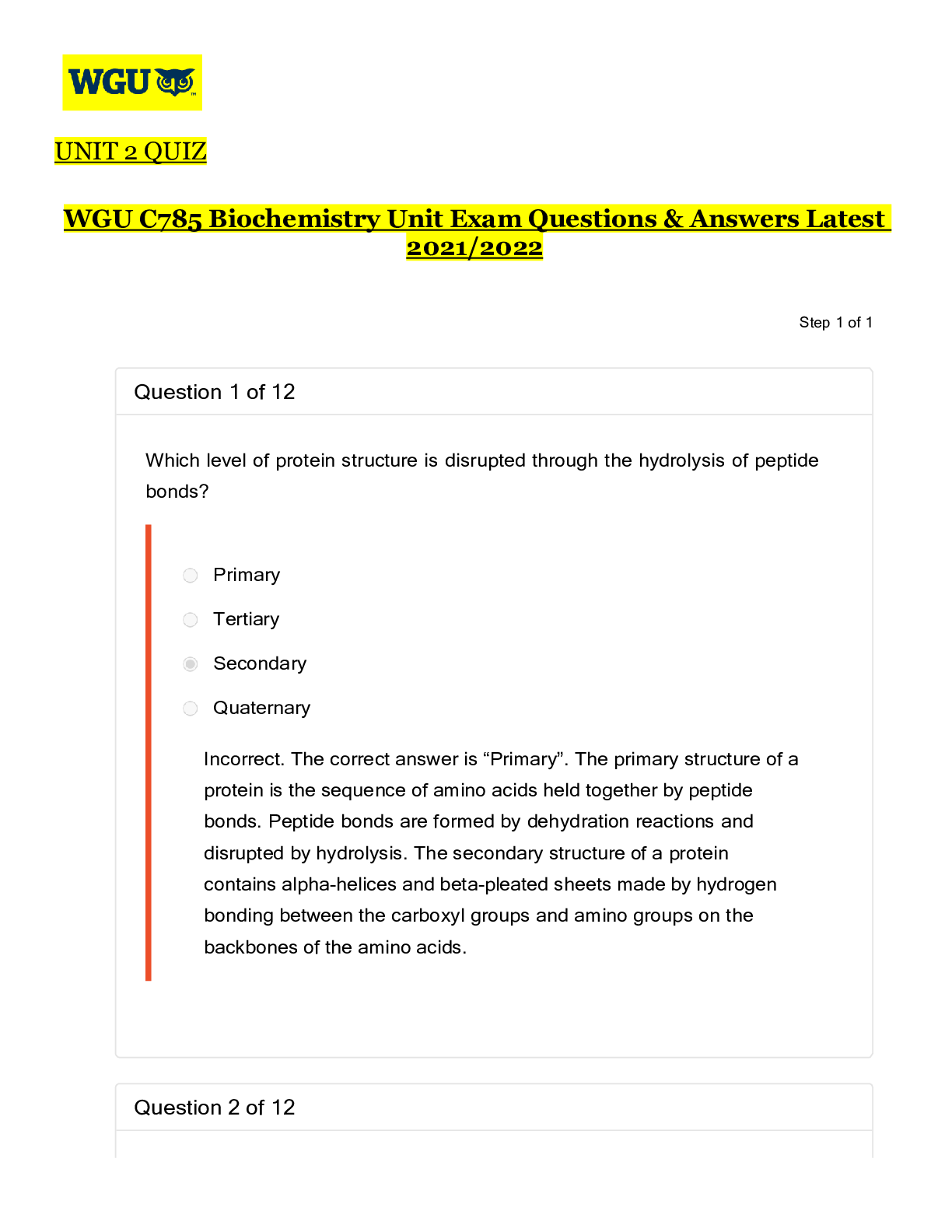
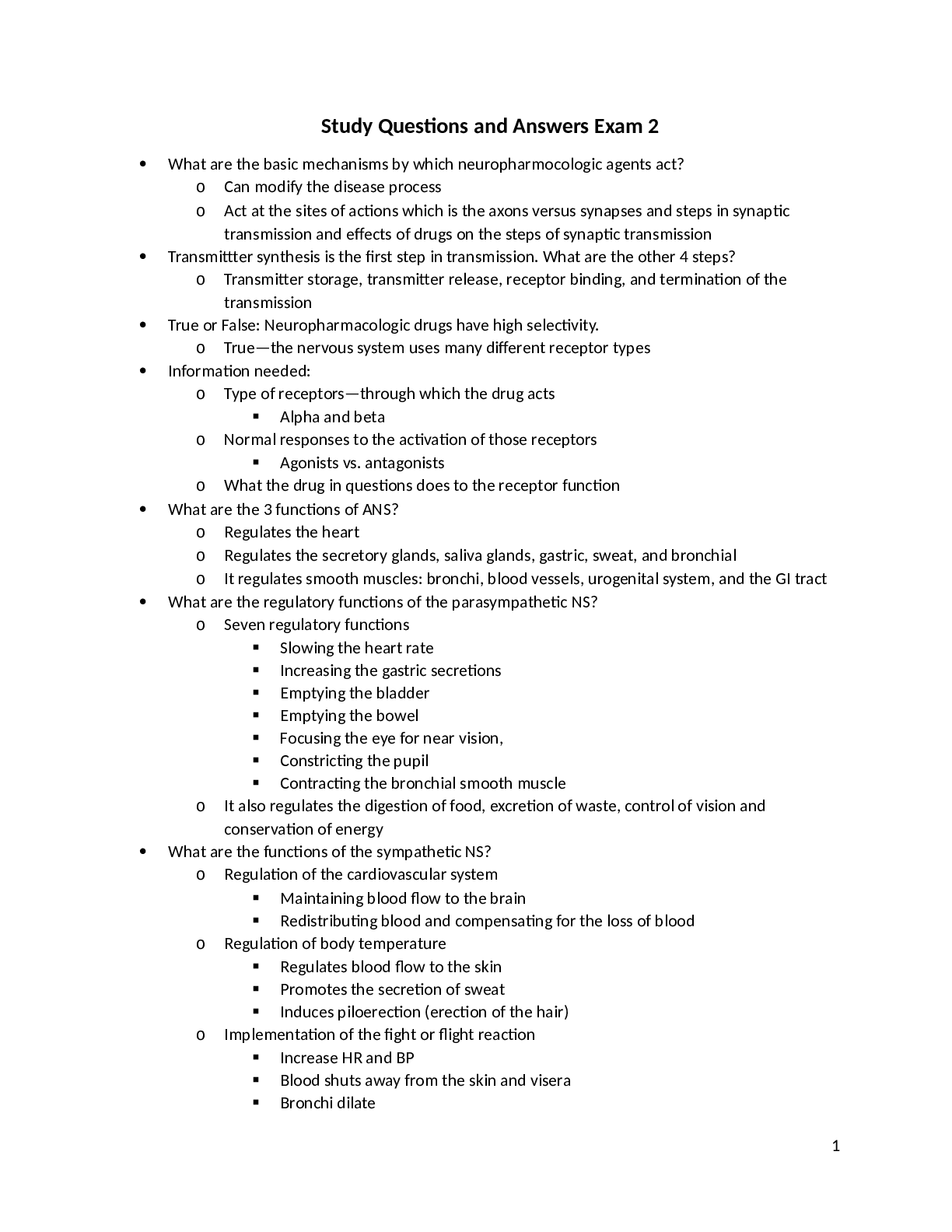



.png)

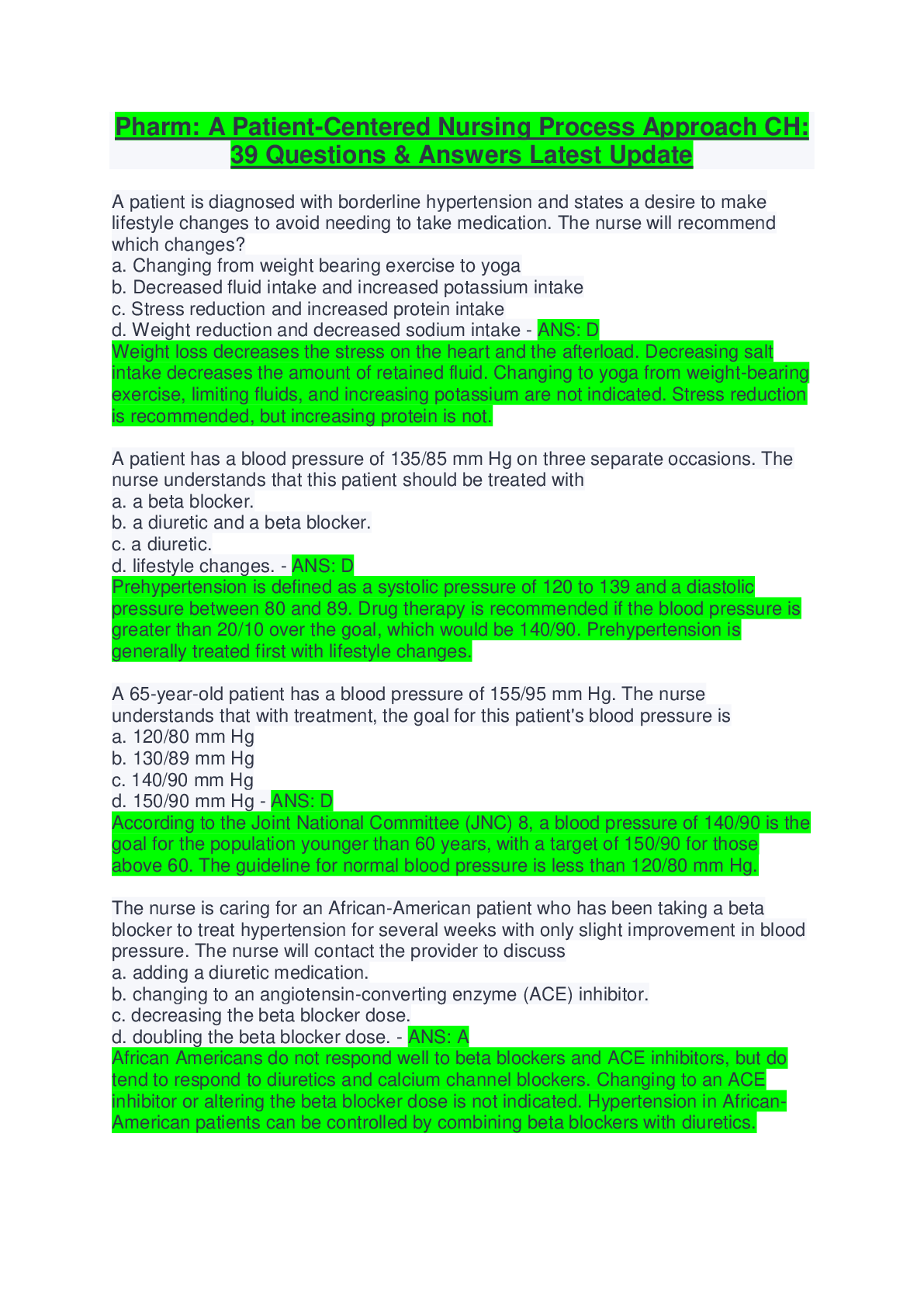
.png)


.png)

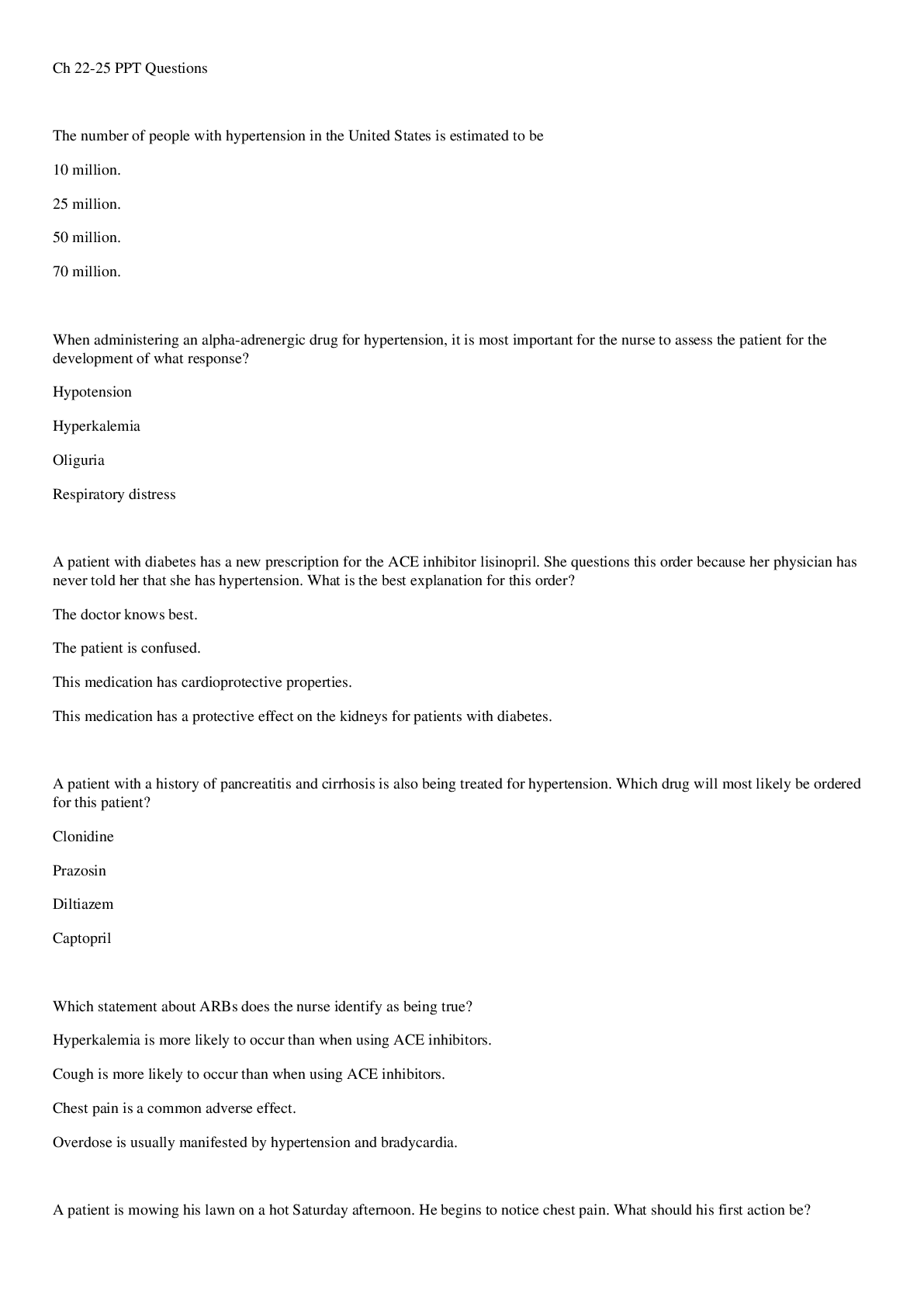
.png)

